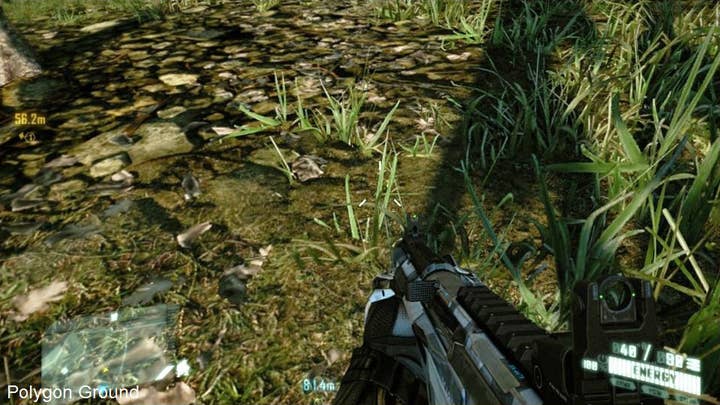Tech Focus: Euclideon's Unlimited Detail
Digital Foundry quizzes Euclideon on its highly controversial point cloud technology
Is it real, is it actually anything new, or is just it vapourware? The release this week of an Unlimited Detail technology demo from new company Euclideon has been met with a mixture of positivity about the quality of the results and scepticism on its application in contemporary video games.
On balance, there's probably been more of the latter with Minecraft developer Notch outright calling it a scam before clarifying and conceding some points the following day.
We contacted the driving force behind the project, Bruce Robert Dell, who agreed to answer a series of questions we put together in consultation with game developers who've shipped many high-profile multi-platform games - exactly the kind of audience Euclideon wants to win over with its new technology.
So, a great chance for Euclideon to evangelise its tech and to address the mixed response of game-makers - but it's fair to say that this tech interview wasn't quite like any we'd carried out in the past...
Well I'm Bruce Dell, I run a little company in Australia that makes computer graphics. Last year we were just two people and I suppose we're what some people would call a 'garage job'. Since that time we've started a company, we have nine employees, we've received investors and got one of the largest grants in the country from the government. Our board of directors are some of the top people in Australian software, and our chairman of the board is the former CEO of one of Australia's largest technology companies. Having a proper company with employees has made a big difference.
The latest demo was running on our office laptop which is 2GHz Core i7. It ran at 20FPS [at] 1280x720 purely in software without touching the 3D part of the GPU, but we certainly haven't added all our optimisation yet. I think next time you will be pleasantly surprised.
I could say we use less memory than what the current polygon system uses, but if I did that I think I'd exceeded my quote of unbelievable claims for the day. So we'll leave that for future demonstrations...
Firstly I'd like to say that I greatly respect John Carmack. In light of the fact that we haven't released real-time demos, his statement is sensible, sane, reasonable, but incorrect. We have too much respect for Mr Carmack's contributions to the 3D graphics industry to speak negatively of him and understand his comments in the light of the graphics systems he is aware of.
If you consider the real-time speeds of those technologies, then you would have to admit that they do differ from us quite greatly.
This only occurs when you are standing very close to the object in question, and currently we have three different techniques to solve this problem. We're still deciding which of the three is best suited to filling in the gaps and which provides the best visual output.
No, it's not like the present polygon systems where they build different objects at different distance, swapping them in and out. Unlimited Detail doesn't work that way. When it comes to geometry it really is unlimited.


[Laughs] That sounds like the sort of question somebody would ask if they were trying to get at all of our well-guarded secrets. But no, the particular tree you're barking up is the wrong one - all the frames take the same amount of time.
At the moment we're running everything very well in software alone, however, we're a greedy bunch and seeing as more power is available in the GPU why not use it? I'm sure in time we will make more use of that.
When it comes to lighting, as we said in the video, it's not quite finished yet. Unlimited Detail is a geometry system, like polygons are a geometry system. Lighting is something separate. We have working examples where Unlimited Detail is using the lighting from the graphics card - they are entirely compatible. However, we're also working on a few lighting techniques of our own which you will see in the future.
If we were making our world out of little tiny atoms and had to store x, y, z, colour etc for each atom, then yes it would certainly use up a lot of memory. But instead we've found another way of doing it. I could say we use less memory than what the current polygon system uses, but if I did that I think I'd exceeded my quote of unbelievable claims for the day. So we'll leave that for future demonstrations.
